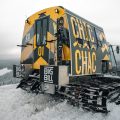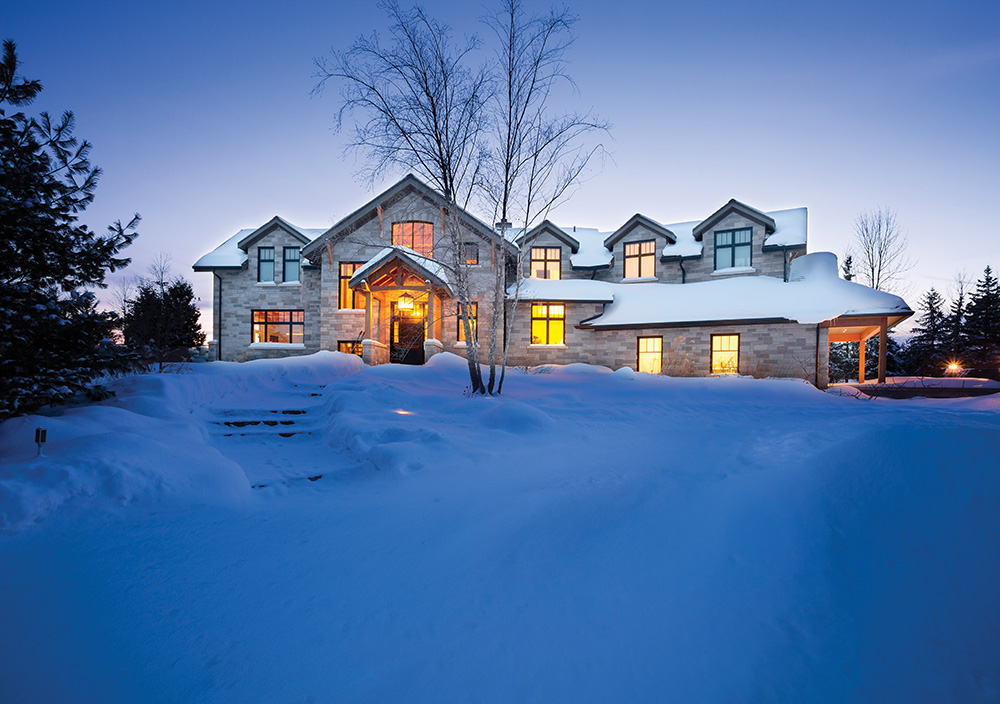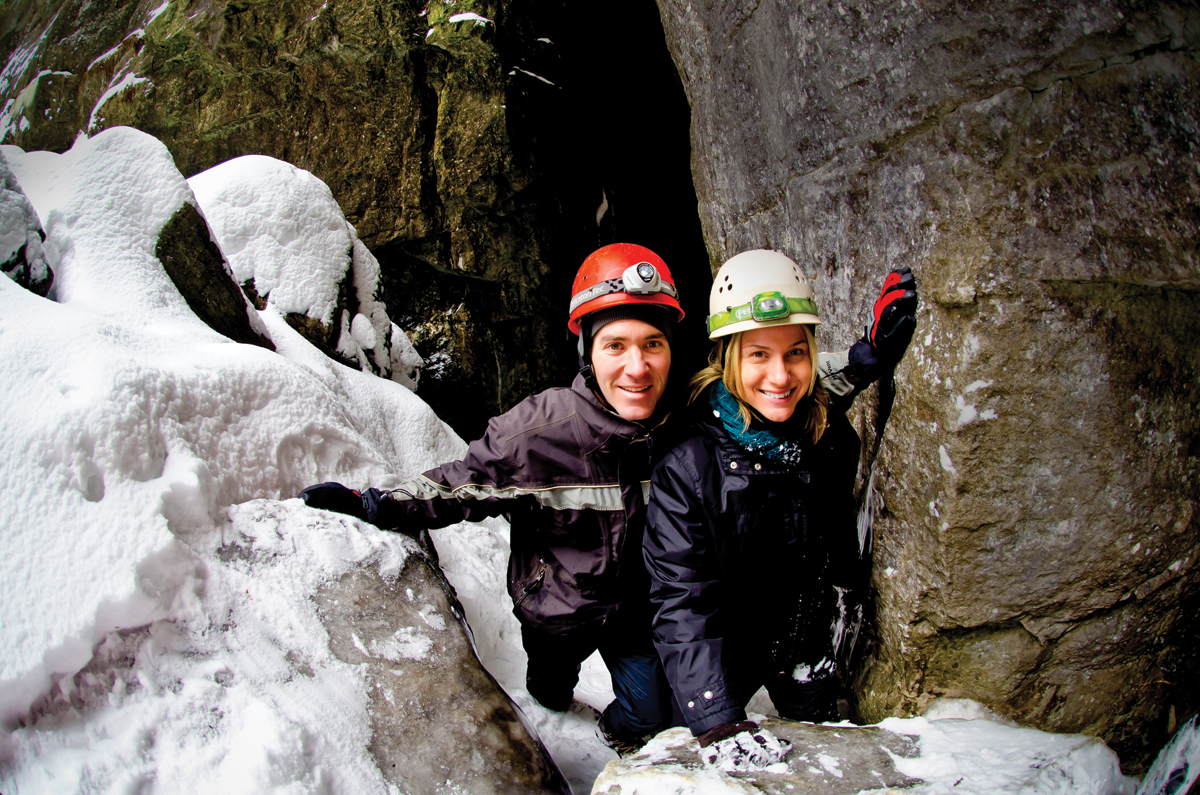Two hours northeast of Quebec City, Mont Edouard ski area boasts a community feel, a reliably early winter season, and a whopping five to 8 metres of annual snowfall.
by David Loopstra // photos provided by Mont Edouard.
The Ski Chronicles: This is the third installment in an ongoing series featuring ski-travel destinations within one day’s travel of Southern Georgian Bay’s ski country.
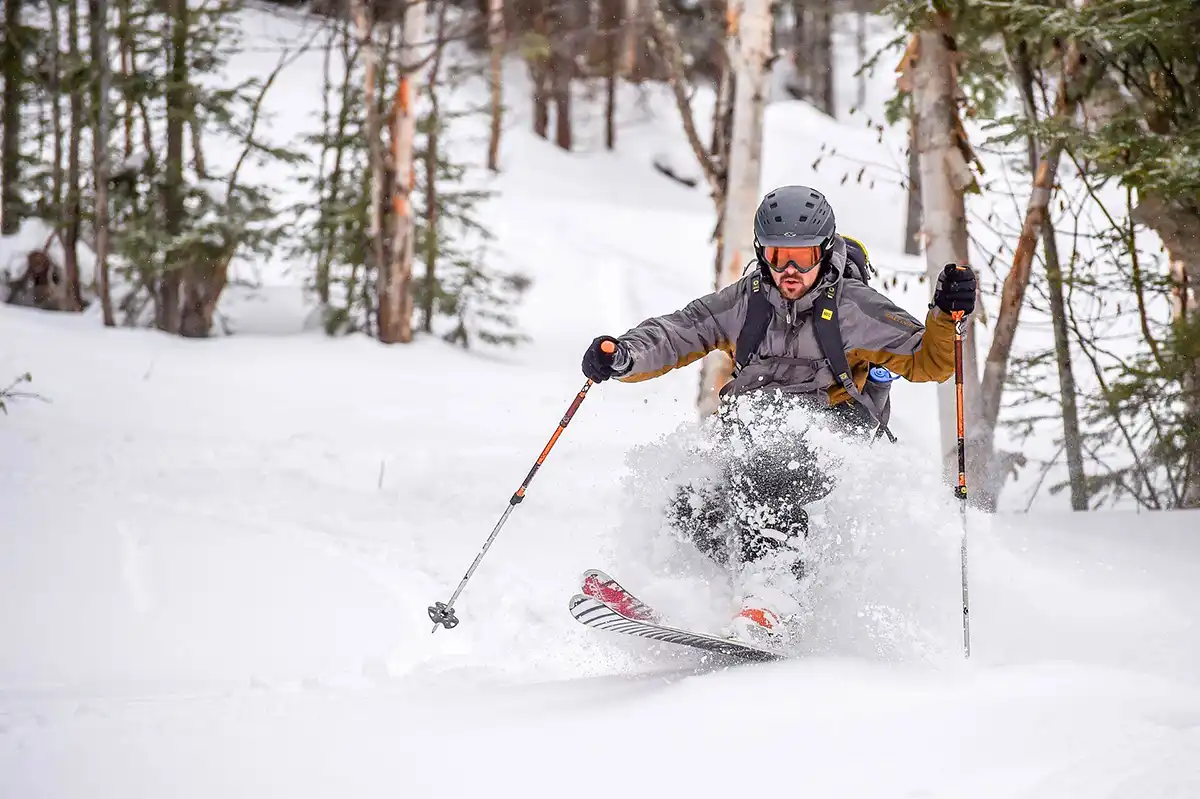
Mont Edouard receives on average 5 to 8 metres of snowfall annually.
Imagine a municipally-owned ski operation that gets between five and 8 meters of snow each winter, opens earlier in the season than most resorts (think: perfect training opportunities for Ontario ski racing teams), and where community volunteers pitch in to clear runs and keep the operation running smoothly.
Think it’s a dream? Think again. This is Mont Edouard, two hours northeast of Quebec City, where a microclimate off the St. Lawrence River means the forecasts always underpromise and overdeliver, and winter comes as early as October.
“Our early-season ski racing opportunities are second-to-none,” says Marc-Andre Busque, Mont Edouard’s new general manager.
Busque points out that Mont Edouard is particularly accommodating to out-of-province race teams, providing dedicated runs for training, along with lift ticket and meal packages. There is ample accommodation, and Busque—whose illustrious career across a range of industries makes for out-of-the-box thinking—is devising methods for Mont Edouard to open even earlier than it already does, which, at early November, is already quite a jump on the season.
The resort has a colourful past.
In the 1980s when logging shut down, the town of L’Anse-Saint-Jean was faced with a choice: shut down as well, or open a ski resort.
They hatched their master plan, but couldn’t raise the funding needed. And when they took the idea to the Quebec government, they were rebuffed.
So they blockaded the road. This went on for days until a provincial cabinet minister arrived at the blockade and announced that the province would fund the resort. Mont Edouard was born—named after an indigenous gentleman who owned the land. Since the 1980s, the resort has gone through a number of trying years. For a while it was bankrupt, to be resurrected by a cooperative.

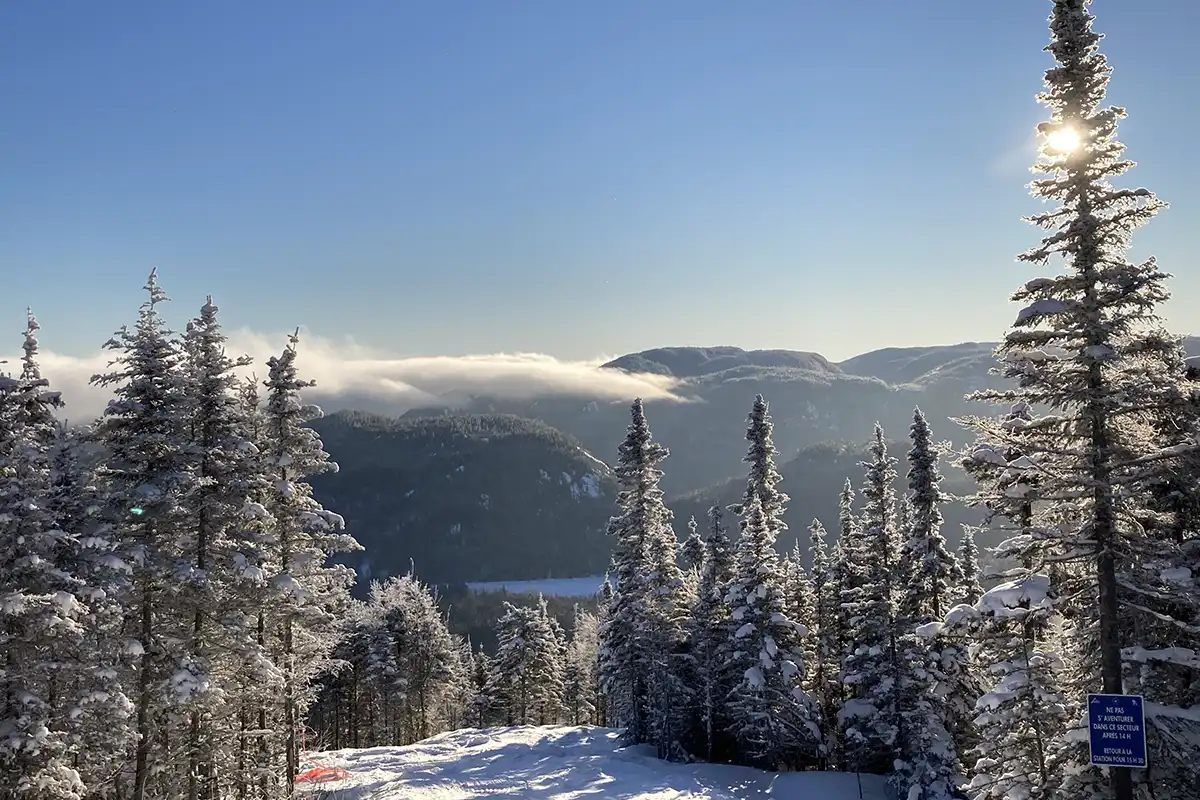
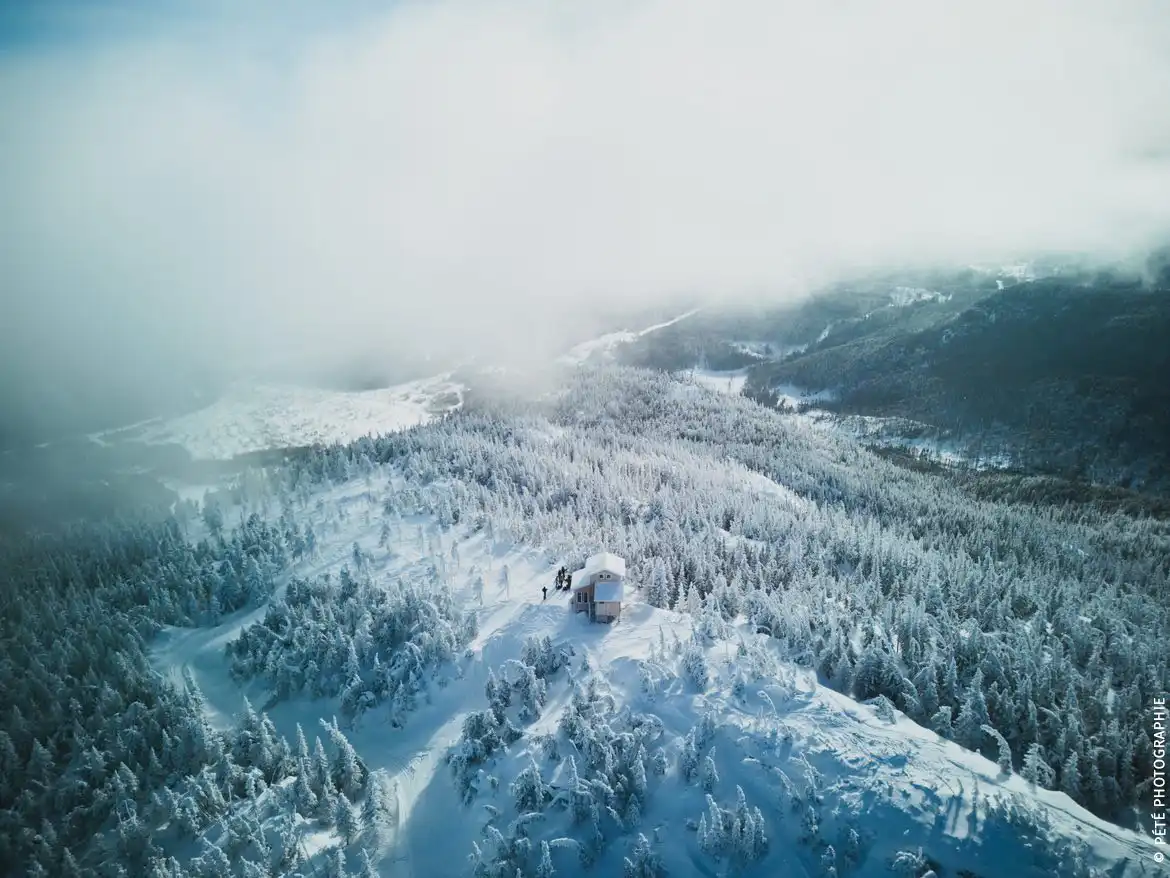
Photo: PÉTÉ PHOTOGRAPHIE
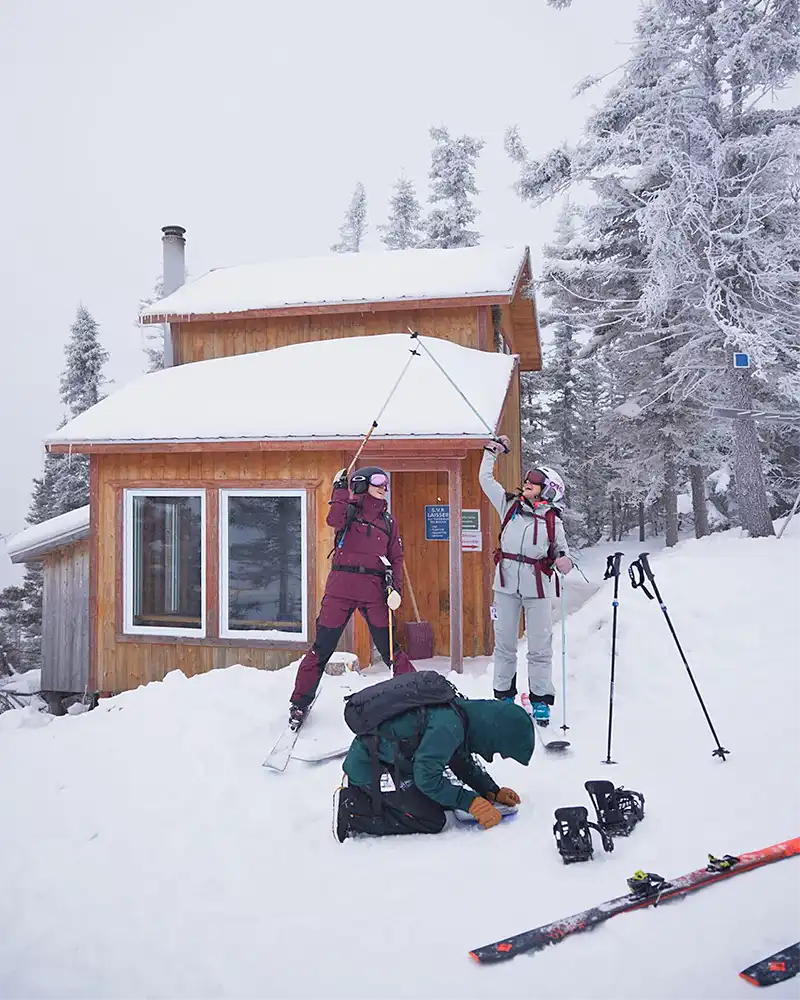
Photo: PÉTÉ PHOTOGRAPHIE
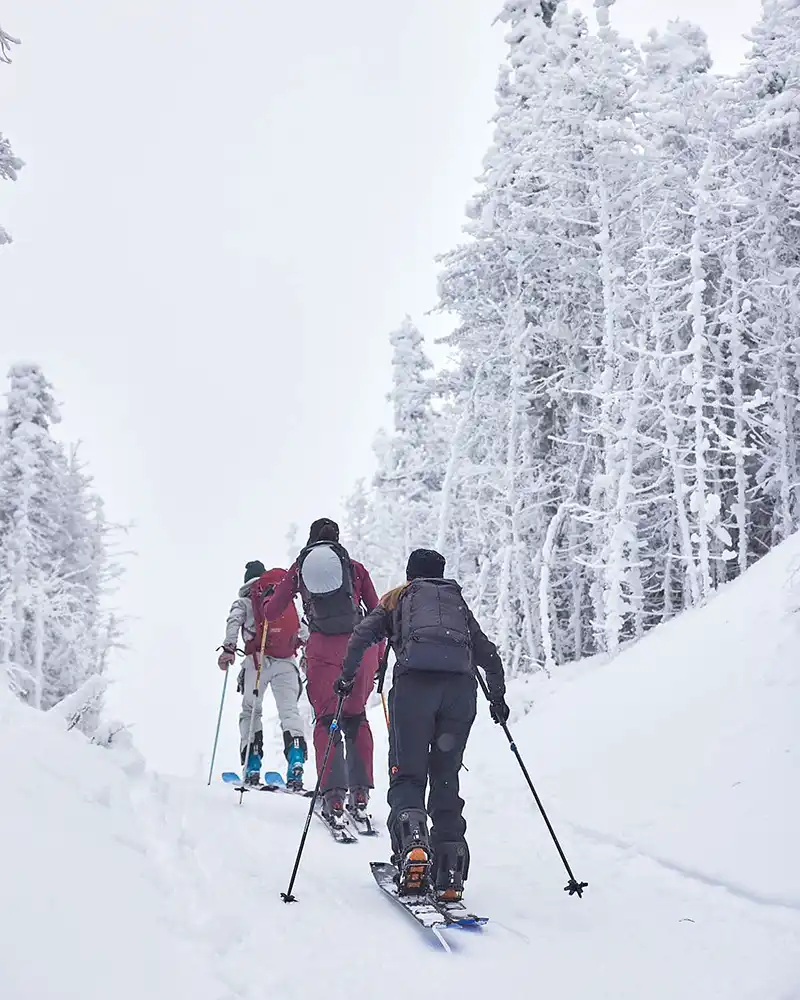
Photo: PÉTÉ PHOTOGRAPHIE
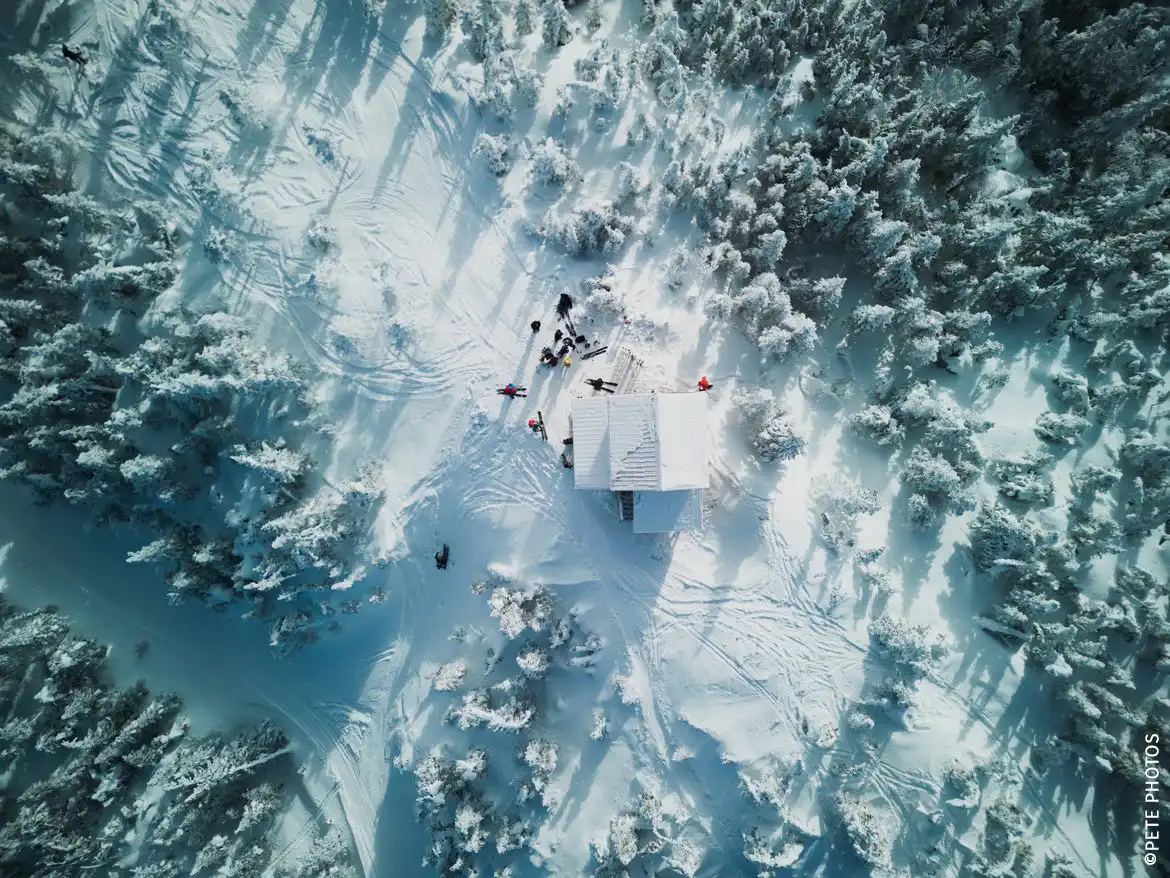
Photo: PÉTÉ PHOTOGRAPHIE
It’s always a challenge to operate a ski resort, let alone one that is 2.5 hours from the nearest big centre. Add to that the fact that to get to Mont Edouard, you drive past iconic mountains such as Mont-Sainte-Anne and Le Massif de Charlevoix, which have two of the highest vertical drops in the province, high speed lifts and, each, a gondola.
But it’s worth it: no crowds, and plenty of fresh snow.
For Busque, it’s a challenge he embraces. This is his first job in the ski industry. With a senior-level background in biotech and industrial products, Busque is a people person and brings his enthusiasm for skiing to the job. “Skiing is my main passion,” he says. Busque represents a key demographic of skiers that are the future of Mont Edouard.
In Quebec, backcountry and powder hounds are a big market. While Ontario’s ski industry revolves around first-timers, recreational skiers and, most importantly, ski racing, Quebec is home to serious snow-lovers.
Busque points out that according to Google analytics for the website, the main traffic is coming from Quebec City, Montreal and Toronto.
“Someone in Montreal will look at the forecast and see that we are expecting 20 to 40 centimetres,” he says. “And they are willing to drive the six hours to come ski here for a few days.”
Accommodation is never a problem, he says, due to the large number of Airbnbs in town. Ranging from $150 a night to larger homes for $600 and up, the accommodation is not expensive.
Self propulsion is big business in Quebec.
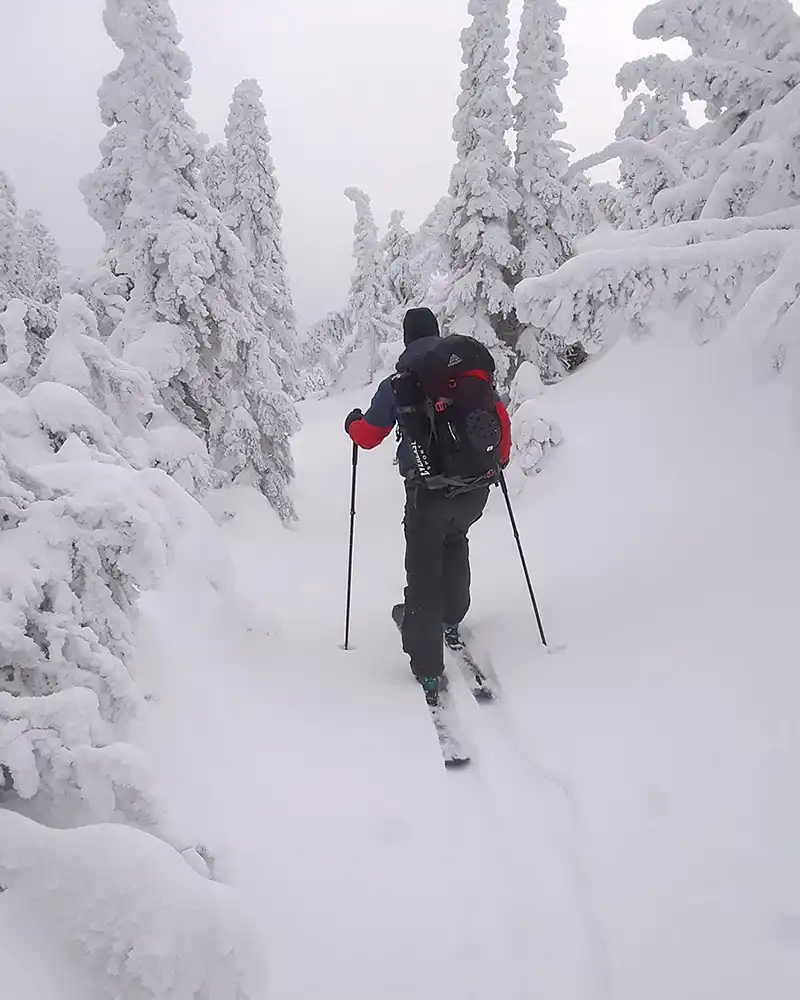
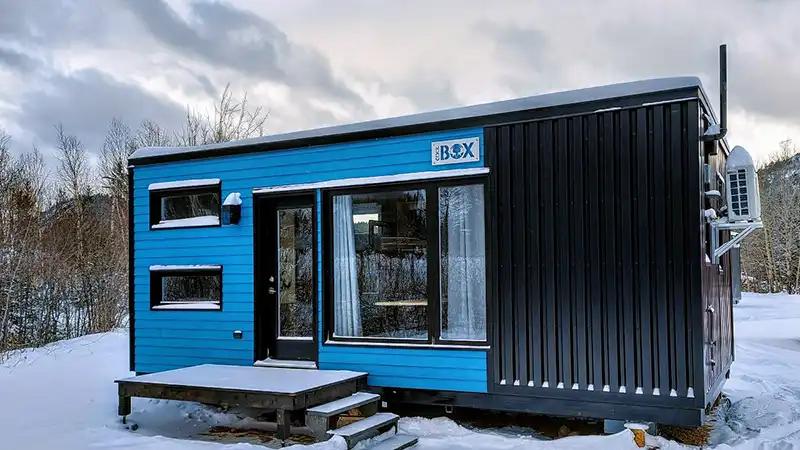
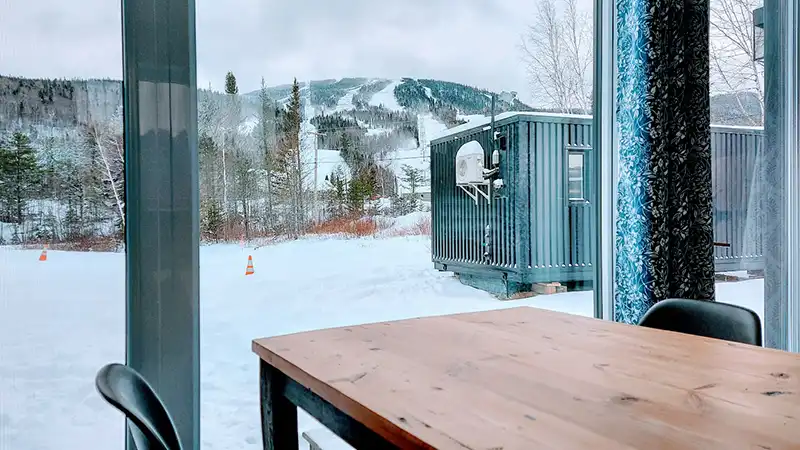
Also, the resort recently entered into a partnership with Coolbox, a company that installs container-like accommodation units on the property. It’s a cutting-edge method for a cash-strapped, municipally-owned resort to provide accommodation.
But it’s expensive operating a resort, especially one boasting 450 acres of in-bounds terrain and 200 acres of backcountry terrain with four backcountry huts for overnight stays. This is in addition to the eight kilometres of cross-country skiing trails and 20 kilometres of snowshoeing trails. The management of this backcountry and sidecountry undertaking alone costs the resort roughly $300,000 per year. But it’s worth it, says Busque.
“It can snow here, and four days later you are still skiing powder—in bounds,” he says. So not even including that backcountry. It’s a powderhound’s dream.
In addition to many Airbnbs in town, Mont Edouard offers Coolbox accommodation slopeside
The backcountry cabins are in high demand. When online booking opened for the season this past year, all the nights for the entirety of the winter, for each of the cabins, was booked up in 20 minutes.
In Quebec, the popularity of a resort is measured in “skier days.” Busque points out that Mont Edouard has the distinct ratio of highest vertical drop to lowest skier days. And while that may sound like paradise for the skiers who visit looking for no crowds and plenty of snow, it is something Busque is aiming to improve upon, while maintaining the community feel, where everyone knows everyone.
“It’s a community-owned hill,” Busque muses, as we ride the chairlift and observe a backcountry skier wearing all the appropriate gear emerge under the ribbon in a closed area. “People look at this as their resort. They are the owners. So it’s hard to tell them ‘No, that run is closed.’” That’s a small problem though. The bigger one is the operating margins.

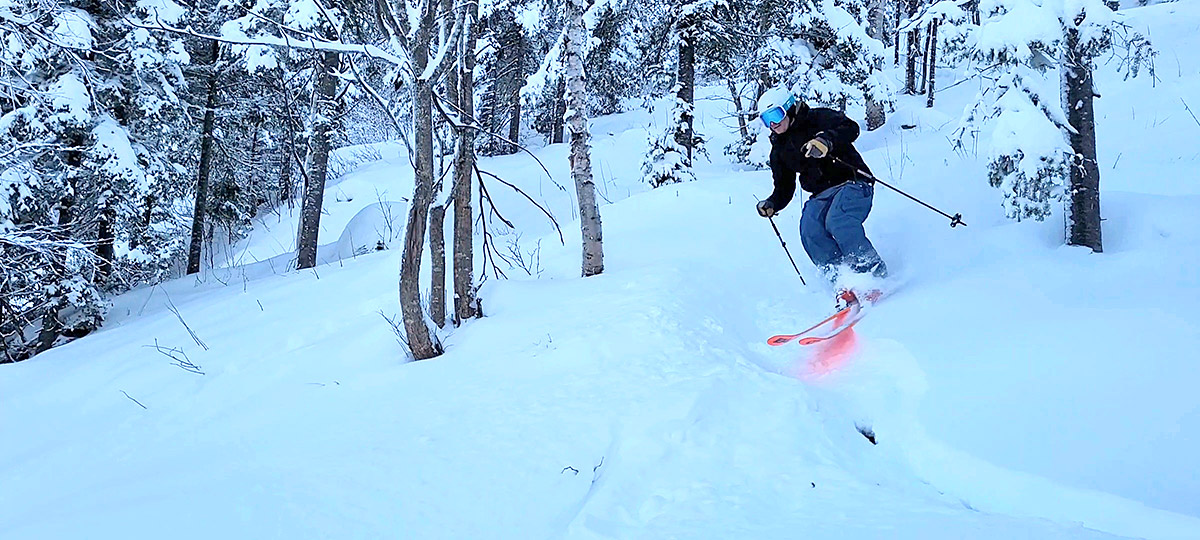
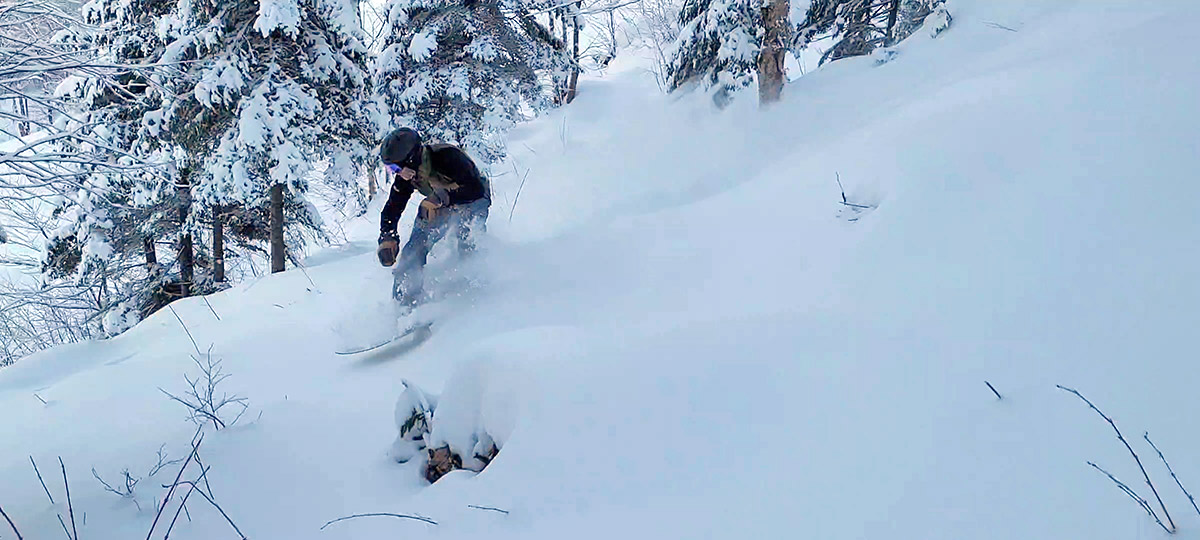
To combat this, enter Guy Belanger, a former financial executive with a cutting-edge idea that got green-lighted by the federal government a few years back. The idea is that not-for-profit organizations can become eligible for RRSP investment—without the investors triggering a tax liability on the investment. In short, the resort, since it’s a non-for-profit, can welcome investment from private shareholders, who can move their RRSP money there without penalty.
In other words, you could own property at a ski hill, but it’ll unfortunately be somewhat of a risky investment if the resort closes. Alternatively, you can park your RRSP money into the resort, fuelling its operation and long-term capital improvements, and enhance your real estate investment.
“This means if you own property here, like a ski chalet or something, you can invest in the resort that is the foundation for your investment,” Belanger tells me one night in the pub. As of the print date of this story, Belanger’s plan has raised $2 million—70 percent of that coming from property owners at the resort.
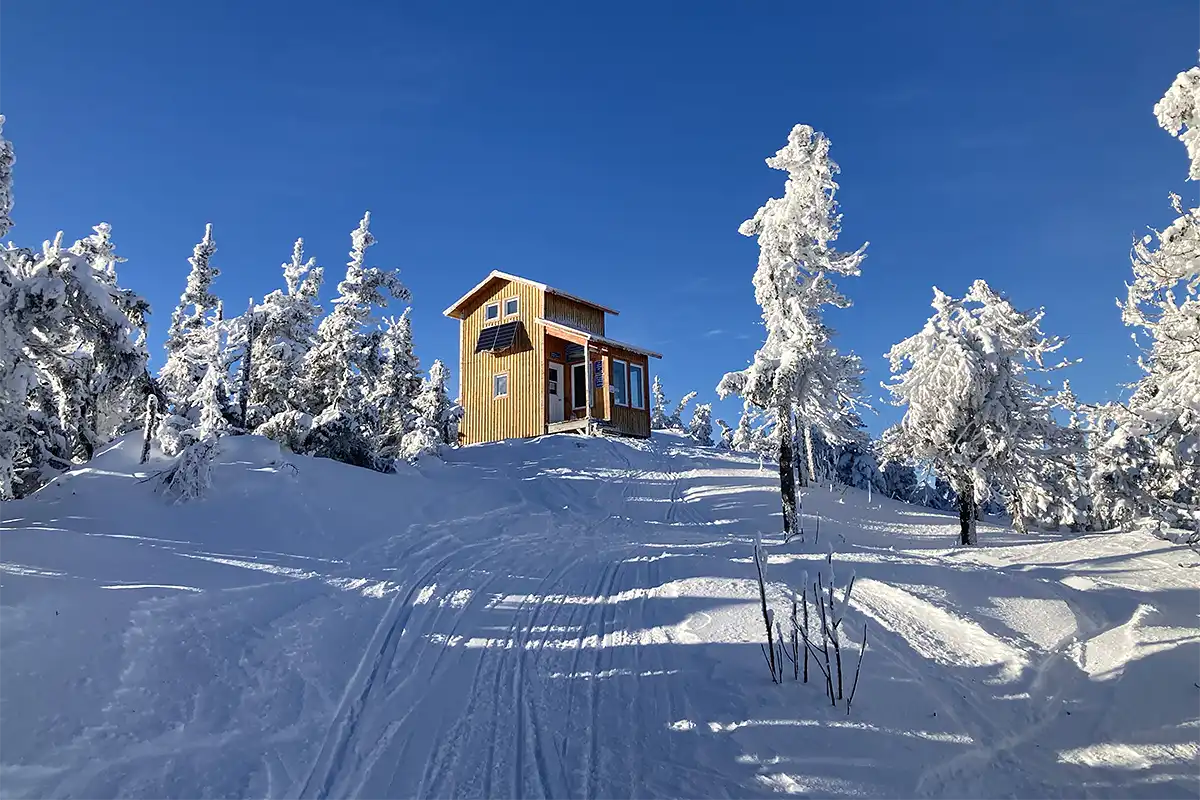
The backcountry huts, which can be booked in advance, are in high demand.
At the pub, Bistro-Bar Chez Ed—a classic ski hill pub rich with character that boasts live music and an extremely vibrant and genuine après scene—on Friday night, this concept seemed to be quite popular. The bar was packed while Belanger spoke about the concept.
All of that is to say that Busque is fitting well into his role.
“There’s never a day off here,” he says. Even Friday, for example, was supposed to be his day off. Until a fire in L’Anse Saint Jean shut the power off. This is generally not an inconvenience, unless your chairlifts—which are powered by electricity—are full of skiers, and it’s minus 20 degrees C.
Thankfully, the resort is equipped with a diesel generator.
“We had the lifts moving again in four minutes,” he says with a smile, quick enough to safely evacuate everyone. The power came back on a couple hours later.
Busque takes me for a tour to the first backcountry hut in the chain. It’s a mellow meander up a ridgeline just outside the resort and affords us views of the huge amounts of terrain accessible to those who have the self-propelled means to access powder.
When we arrive at the cabin, we meet Christian Doucet and Ariane Benoit, who travelled from Val-des-Monts, near Ottawa, for the backcountry touring.
“This place, this snow,” exclaims Doucet, “It is worth the drive. This place is very very special.”
Hence, Busque’s unwavering focus: promote the incredible backcountry.
“Here, we have the weather,” he says. “We have the cold for winter—every year. And we have the snow.” It’s a seemingly foolproof plan in a world with a climate that’s always changing.






